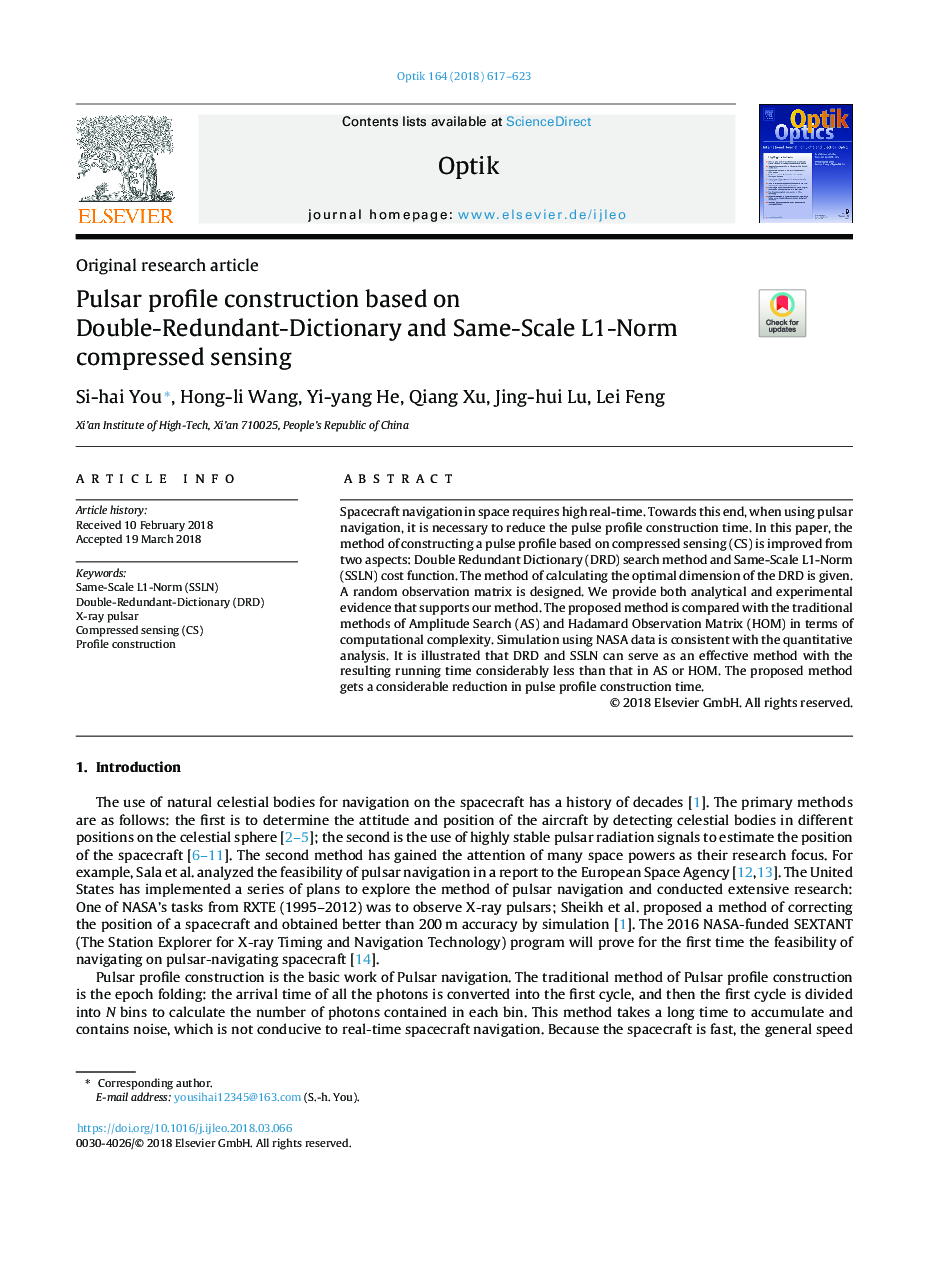| Article ID | Journal | Published Year | Pages | File Type |
|---|---|---|---|---|
| 7223924 | Optik - International Journal for Light and Electron Optics | 2018 | 7 Pages |
Abstract
Spacecraft navigation in space requires high real-time. Towards this end, when using pulsar navigation, it is necessary to reduce the pulse profile construction time. In this paper, the method of constructing a pulse profile based on compressed sensing (CS) is improved from two aspects: Double Redundant Dictionary (DRD) search method and Same-Scale L1-Norm (SSLN) cost function. The method of calculating the optimal dimension of the DRD is given. A random observation matrix is designed. We provide both analytical and experimental evidence that supports our method. The proposed method is compared with the traditional methods of Amplitude Search (AS) and Hadamard Observation Matrix (HOM) in terms of computational complexity. Simulation using NASA data is consistent with the quantitative analysis. It is illustrated that DRD and SSLN can serve as an effective method with the resulting running time considerably less than that in AS or HOM. The proposed method gets a considerable reduction in pulse profile construction time.
Keywords
Related Topics
Physical Sciences and Engineering
Engineering
Engineering (General)
Authors
Si-hai You, Hong-li Wang, Yi-yang He, Qiang Xu, Jing-hui Lu, Lei Feng,
